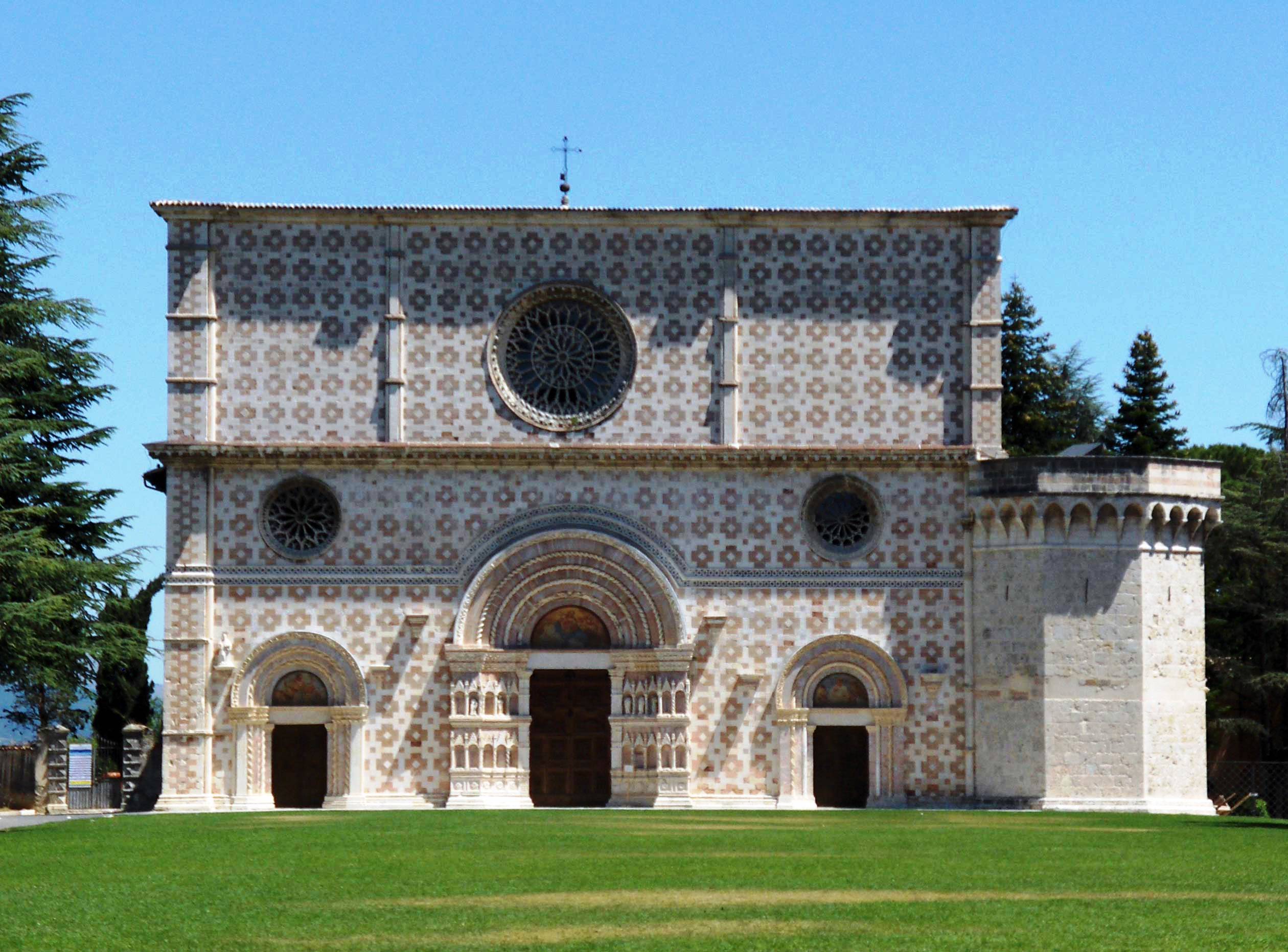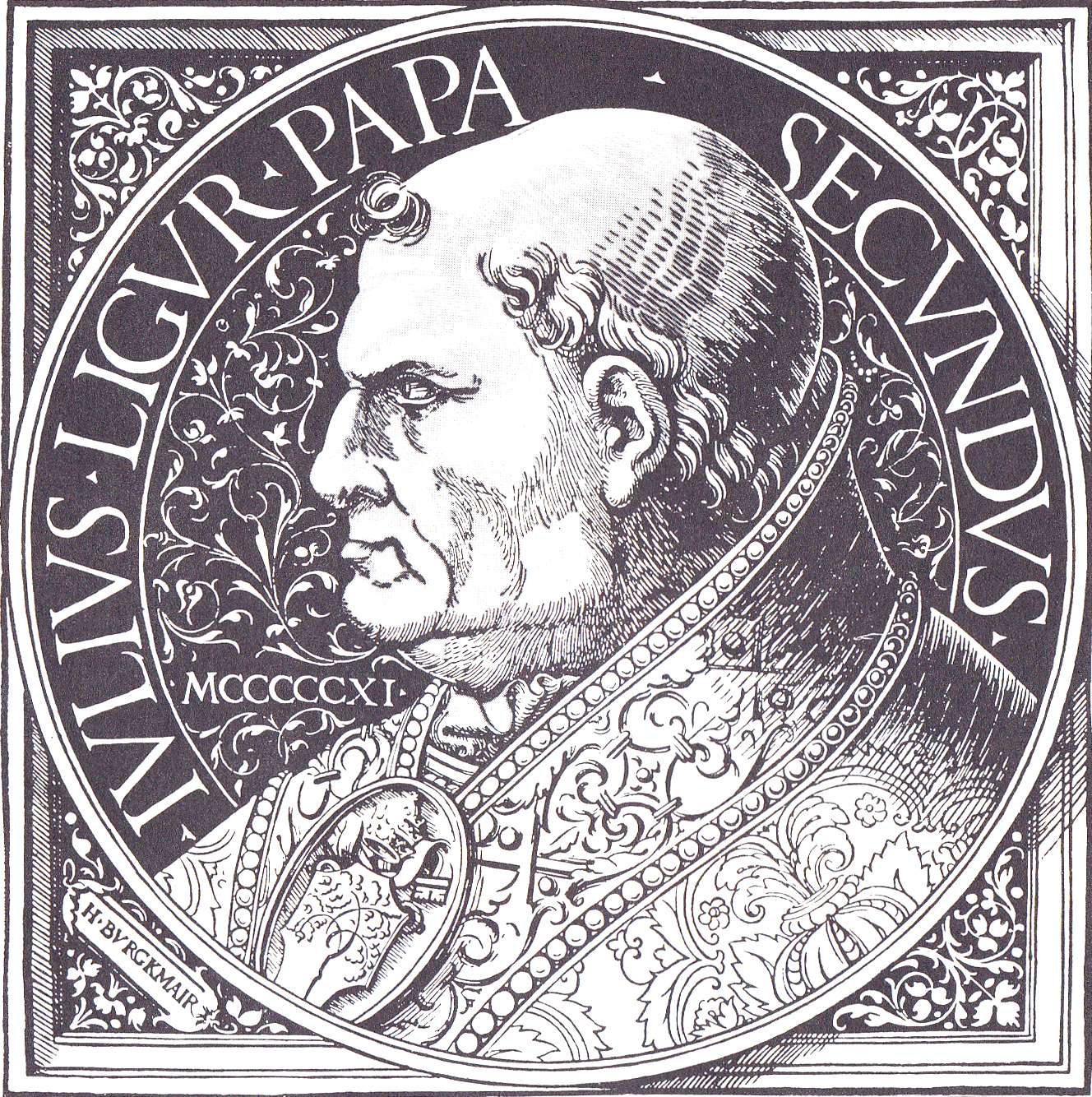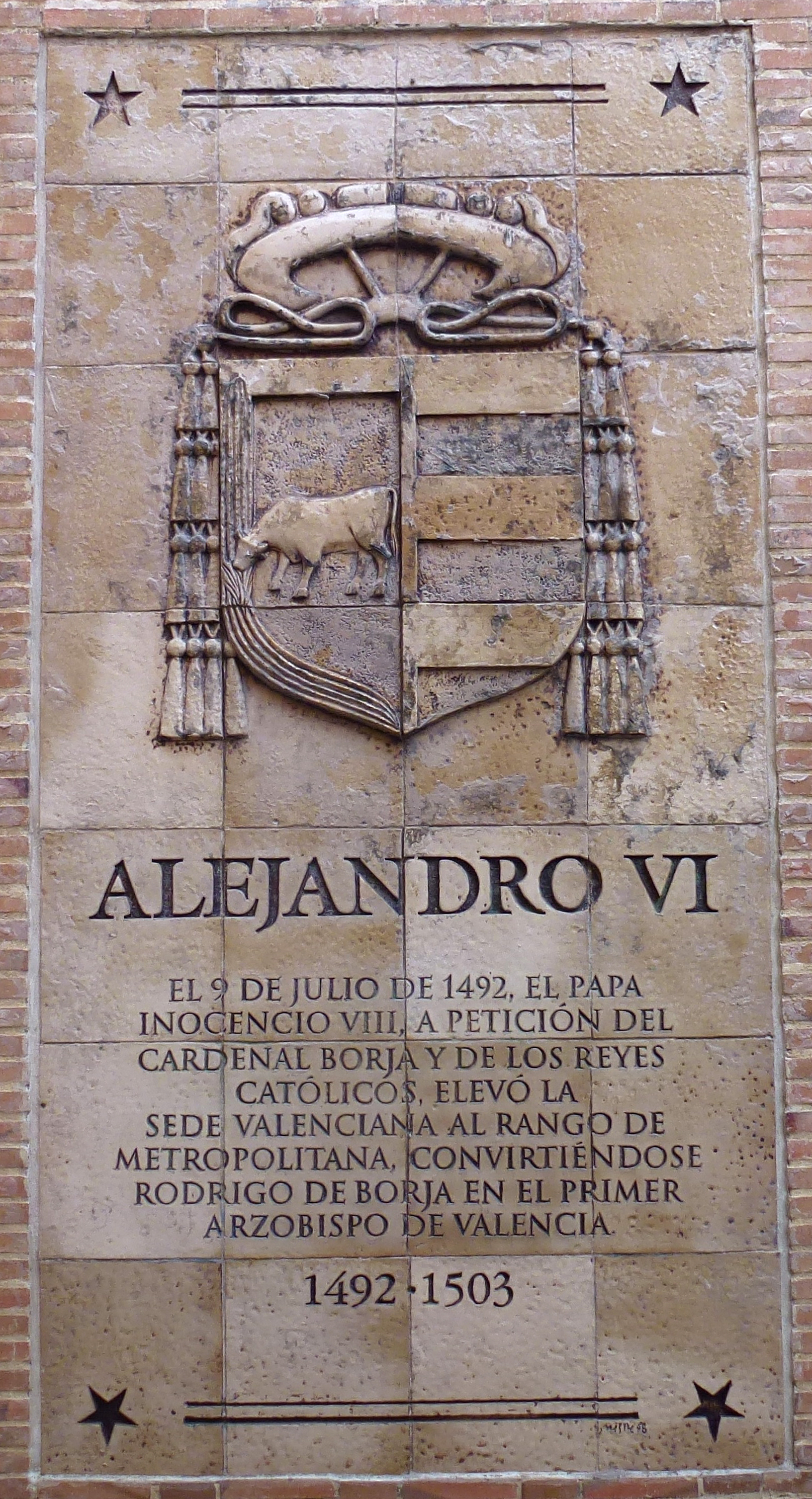|
Joanna Of Aragon, Queen Of Naples
Joanna of Aragon (, ; 16 June 1455 – 9 January 1517) was Queen of Naples as the second wife of King Ferdinand I. She served as regent (General Lieutenant) of Naples between the abdication and flight of her husband's son Alfonso II on 22 February 1495 until the formal succession of Alfonso's son, Ferdinand II. Born in Barcelona, Joanna was the second child of King John II of Aragon by his second wife, Juana Enríquez de Córdoba, and his youngest legitimate child. Queenship King Ferdinand I of Naples, an illegitimate son of her uncle Alfonso V of Aragon, asked Joanna's hand in marriage from John II and he accepted. After the wedding on 14 September the contract was signed in Navarre, on 5 October 1476 and the agreement was ratified on 25 November. John II gave his daughter a dowry of 100,000 gold florins and Ferdinand gave his new wife many duchies and/or cities, such as Sorrento, Theano, Isernia, Teramo, Sulmona, Francavilla and Nocera. He also gave her more than 2 ... [...More Info...] [...Related Items...] OR: [Wikipedia] [Google] [Baidu] |
List Of Consorts Of Naples
This is a list of consorts of Kingdom of Naples, Naples. Many kings of Naples had more than one wife; they may have divorced their wife or she might have died. Early Byzantine Duchesses of Duchy of Naples, Naples :''See Also'': Dukes of Naples * Drosu, wife of Sergius I of Naples, Sergius I * Theodora, wife of John III of Naples, Theodora, Roman senator, senatrix, daughter of Giovanni and his wife Theodora, daughter of Theophylact I, Count of Tusculum, Theophylacto I of Tusculum & his wife Theodora (senatrix), Theodora; wife of John III of Naples, John III * Limpiasa of Capua, daughter of Richard I of Capua and Fredesenda of House of Hauteville, Hauteville, married Sergius VI of Naples, Sergius VI in April 1078 also held title of ''Protosebastos, Protosebastē'' * Eva (or Anna) of Gaeta, daughter of Geoffrey Ridell, Geoffrey Ridell, Duke of Gaeta, wife of John VI of Naples, John VI, also held title of ''Protosebastos, Protosebastē'' Royal consort of Kingdom of Naples, Napl ... [...More Info...] [...Related Items...] OR: [Wikipedia] [Google] [Baidu] |
Isernia
Isernia () is a town and ''comune'' in the southern Italian region of Molise, and the capital of the province of Isernia. Geography Situated on a rocky crest rising from between the Carpino and the Sordo rivers, the plan of Isernia still reflects the ancient layout of the Roman town, with a central wide street, the '' cardo maximus'', still represented by Corso Marcelli, and side streets at right angles on both sides. The comune of Isernia includes 16 frazioni. The most densely populated is Castelromano which is positioned in a plain at the base of the La Romana mount, elevation , from Isernia. History The city's Roman name, ''Aesernia'', reflects probably a former Samnite toponym, but a connection to an Indo-European root, ''aeser'', which means "water", is tenuous. Classical Aesernia was a city of Samnium, included within the territory of the Pentri tribe, situated in the valley of the Vulturnus (modern Volturno), on a small stream flowing into that river, and distant ... [...More Info...] [...Related Items...] OR: [Wikipedia] [Google] [Baidu] |
Lieutenant General
Lieutenant general (Lt Gen, LTG and similar) is a military rank used in many countries. The rank traces its origins to the Middle Ages, where the title of lieutenant general was held by the second-in-command on the battlefield, who was normally subordinate to a captain general. In modern armies, lieutenant general normally ranks immediately below general (or colonel general) and above major general; it is equivalent to the navy rank of vice admiral, and in air forces with a separate rank structure, it is equivalent to air marshal. In the United States, a lieutenant general has a three star insignia and commands an army corps, typically made up of three army divisions, and consisting of around 60,000 to 70,000 soldiers. The seeming incongruity that a lieutenant general outranks a major general (whereas a major outranks a lieutenant) is due to the derivation of major general from sergeant major general, which was a rank subordinate to lieutenant general (as a lieutenan ... [...More Info...] [...Related Items...] OR: [Wikipedia] [Google] [Baidu] |
Italian Language
Italian (, , or , ) is a Romance language of the Indo-European language family. It evolved from the colloquial Latin of the Roman Empire. Italian is the least divergent language from Latin, together with Sardinian language, Sardinian. It is spoken by about 68 million people, including 64 million native speakers as of 2024. Italian is an official language in Languages of Italy, Italy, Languages of San Marino, San Marino, Languages of Switzerland, Switzerland (Ticino and the Grisons), and Languages of Vatican City, Vatican City; it has official Minority language, minority status in Minority languages of Croatia, Croatia, Slovene Istria, Romania, Bosnia and Herzegovina, and the municipalities of Santa Teresa, Espírito Santo, Santa Tereza, Encantado, Rio Grande do Sul, Encantado, and Venda Nova do Imigrante in Languages of Brazil#Language co-officialization, Brazil. Italian is also spoken by large Italian diaspora, immigrant and expatriate communities in the Americas and Austral ... [...More Info...] [...Related Items...] OR: [Wikipedia] [Google] [Baidu] |
Queen Dowager
A queen dowager or dowager queen (compare: princess dowager or dowager princess) is a title or status generally held by the widow of a king. In the case of the widow of an emperor, the title of empress dowager is used. Its full meaning is clear from the two words from which it is composed: queen indicates someone who served as queen consort (i.e. wife of a king), while dowager indicates a woman who continues to hold the title from her deceased husband (a queen who reigns in her own right is a queen regnant). A queen mother is a former queen consort, often a dowager queen, who is the mother of the reigning monarch. there are four queens dowager: Kesang Choden of Bhutan (who is the only living queen grandmother worldwide), Norodom Monineath of Cambodia (who is also queen mother), Lisa Najeeb Halaby (Noor Al'Hussein) of Jordan, and Sirikit Kitiyakara of Thailand (who is also queen mother). Status A queen dowager has an important royal position (whether or not she is the ... [...More Info...] [...Related Items...] OR: [Wikipedia] [Google] [Baidu] |
L'Aquila
L'Aquila ( ; ; ) is a city and ''comune'' in central Italy. It is the capital city of the Province of L'Aquila and the Abruzzo region in Italy. , it has a population of 69,902. Laid out within medieval walls on a hill in the wide valley of the Aterno-Pescara, Aterno river, it is surrounded by the Apennine Mountains, with the Gran Sasso d'Italia to the north-east. L'Aquila sits on a hillside in the middle of a narrow valley; the tall snow-capped mountains of the Gran Sasso massif flank the town. A maze of narrow streets, lined with Baroque and Renaissance buildings and churches, open onto elegant piazzas. Home to the University of L'Aquila, it is a lively college town and, as such, has many cultural institutions: a Repertory, repertory theatre, a symphony orchestra, a fine art academy, a state conservatory and a film institute. There are several ski resorts in the surrounding province (Campo Imperatore, Ovindoli, Pescasseroli, Roccaraso, Scanno, Abruzzo, Scanno). Geography Close ... [...More Info...] [...Related Items...] OR: [Wikipedia] [Google] [Baidu] |
Abruzzo
Abruzzo (, ; ; , ''Abbrìzze'' or ''Abbrèzze'' ; ), historically also known as Abruzzi, is a Regions of Italy, region of Southern Italy with an area of 10,763 square km (4,156 sq mi) and a population of 1.3 million. It is divided into four Provinces of Italy, provinces: Province of L'Aquila, L'Aquila, Province of Teramo, Teramo, Province of Pescara, Pescara, and Province of Chieti, Chieti. Its western border lies east of Rome. Abruzzo borders the region of Marche to the north, Lazio to the west and northwest, Molise to the south and the Adriatic Sea to the east. Geographically, Abruzzo is divided into a mountainous area in the west, which includes the highest massifs of the Apennines, such as the Gran Sasso d'Italia and the Maiella, and a coastal area in the east with beaches on the Adriatic Sea. Abruzzo is considered a region of Southern Italy in terms of its culture, language, economy, and history, though in terms of physical geography, it is often considered part of Cen ... [...More Info...] [...Related Items...] OR: [Wikipedia] [Google] [Baidu] |
Pope Julius II
Pope Julius II (; ; born Giuliano della Rovere; 5 December 144321 February 1513) was head of the Catholic Church and ruler of the Papal States from 1503 to his death, in February 1513. Nicknamed the Warrior Pope, the Battle Pope or the Fearsome Pope, it is often speculated that he had chosen his papal name not in honor of Pope Julius I but in emulation of Julius Caesar. One of the most powerful and influential popes, Julius II was a central figure of the High Renaissance and left a significant cultural and political legacy. As a result of his policies during the Italian Wars, the Papal States increased their power and centralization, and the office of the papacy continued to be crucial, diplomatically and politically, during the entirety of the 16th century in Italy and Europe. In 1506, Julius II established the Vatican Museums and initiated the rebuilding of the St. Peter's Basilica. The same year he organized the famous Swiss Guard for his personal protection and commanded a su ... [...More Info...] [...Related Items...] OR: [Wikipedia] [Google] [Baidu] |
Pope Innocent VIII
Pope Innocent VIII (; ; 1432 – 25 July 1492), born Giovanni Battista Cybo (or Cibo), was head of the Catholic Church and ruler of the Papal States from 29 August 1484 to his death, in July 1492. Son of the viceroy of Naples, Cybo spent his early years at the Neapolitan court. He became a priest in the retinue of Cardinal Calandrini, half-brother to Pope Nicholas V (1447–55); Bishop of Savona under Pope Paul II; and with the support of Cardinal Giuliano Della Rovere he was made a cardinal by Pope Sixtus IV. After intense politicking by Della Rovere, Cybo was elected pope in 1484. King Ferdinand I of Naples had supported Cybo's competitor, Rodrigo Borgia. The following year, Pope Innocent supported the barons in their failed revolt. During his papacy, Pope Innocent issued a papal bull on witchcraft named Summis desiderantes affectibus. In March 1489, Cem, the captive brother of Bayezid II, the sultan of the Ottoman Empire, came into Innocent's custody. Viewing his br ... [...More Info...] [...Related Items...] OR: [Wikipedia] [Google] [Baidu] |
Pope Alexander VI
Pope Alexander VI (, , ; born Roderic Llançol i de Borja; epithet: ''Valentinus'' ("The Valencian"); – 18 August 1503) was head of the Catholic Church and ruler of the Papal States from 11 August 1492 until his death in 1503. Born into the prominent Borja family in Xàtiva in the Kingdom of Valencia under the Crown of Aragon, he was known as Roderic de Borja, and he is commonly referred to by the Italianized form as Rodrigo Borgia. He studied law at the University of Bologna. He was ordained deacon and made a cardinal in 1456 after the election of his uncle as Pope Callixtus III, and a year later he became vice-chancellor of the Catholic Church. He proceeded to serve in the Roman Curia under the next four popes, acquiring significant influence and wealth in the process. In 1492, Rodrigo was elected pope, taking the name Alexander VI. Alexander's papal bulls of 1493 confirmed or reconfirmed the rights of the Spanish crown in the New World following the finds of Christop ... [...More Info...] [...Related Items...] OR: [Wikipedia] [Google] [Baidu] |
Ducat
The ducat ( ) coin was used as a trade coin in Europe from the later Middle Ages to the 19th century. Its most familiar version, the gold ducat or sequin containing around of 98.6% fine gold, originated in Venice in 1284 and gained wide international acceptance over the centuries. Similarly named silver ducatons also existed. The gold ducat circulated along with the Florentine florin and preceded the modern British pound sterling. Predecessors The word ''ducat'' is from Medieval Latin ''ducalis'' = "relating to a duke (or dukedom)", and initially meant "duke's coin" or a "duchy's coin". The first issue of scyphate billon coins modelled on Byzantine ''trachea'' was made by King Roger II of Sicily as part of the Assizes of Ariano (1140). It was to be a valid issue for the whole kingdom. The first issue bears the figure of Christ and the Latin inscription ''Sit tibi, Christe, datus, quem tu regis iste ducatus'' (meaning "O Christ, let this duchy, which you rule, be dedi ... [...More Info...] [...Related Items...] OR: [Wikipedia] [Google] [Baidu] |
Nocera Terinese
Nocera Terinese is a town and ''comune'' of the province of Catanzaro in the Calabria region of southern Italy Italy, officially the Italian Republic, is a country in Southern Europe, Southern and Western Europe, Western Europe. It consists of Italian Peninsula, a peninsula that extends into the Mediterranean Sea, with the Alps on its northern land b .... In its territory, according to the last archaeological investigations, was located the ancient Greater Greece city of Terina. See also * Savuto river References Cities and towns in Calabria {{Calabria-geo-stub ... [...More Info...] [...Related Items...] OR: [Wikipedia] [Google] [Baidu] |





